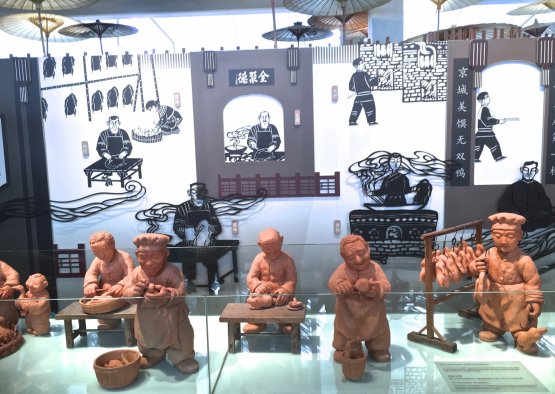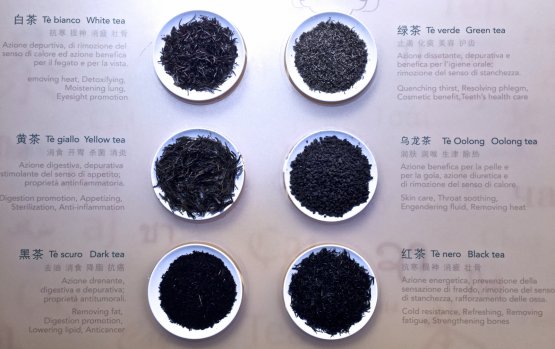China at Expo built one of the largest pavilions, 4,590 square metres, only second to Germany, and this already means something: after all, it does boast to be the second largest economy in the world... The pavilion is also one of the most beautiful and scenic, if not the most pleasant-looking of all, with an ocean of yellow flowers – tagete and many more – welcoming to the building, kilometres of bamboo fusing natural and human landscapes. The roof seems to recall the waves, or the shape of a pagoda, and covers light installations that are both a field of wheat and a horizontal video screen. Tradition and technology, past and future... Together, they form a perfectly harmonious mix, just like the one today represented (or to be represented) by China, suspended between a millennial history and a promising future.
“Harmony” is indeed one of the key words in the Chinese presence in Milan, together with “Sky”, “Earth” and “Man”. These four terms introduce as many show areas in the pavilion. The “Sky” is represented, for instance, by the signs in the Chinese horoscope, among classic paper sun-umbrellas decorated by the students of the Academy of Fine Arts in Beijing while sound effects recall the sounds of nature.

The representation illustrates the making of the lacquered duck at restaurant Quanjude in Beijing
”Man” takes shape, instead, thanks to the reproduction of the wall paintings to be found on the Hua shan mountains. Or in the pages of
Qiminyaoshu, an educational essay completed in 544, illustrating farming and forestry techniques, zoology, fishery and food. All this introduces the “Earth” theme, with the natural terraced fields of the Hani people from Yunnan: they are one of the 56 ethnic groups officially acknowledged by the People’s Republic of China.
This is a further interesting novelty: this great country explains itself to the visitor – it is the first time China participates to a World Fair with a self-built pavilion – showing and explaining its agricultural policy in detail, from history to future innovations. Provinces and single cities are also present with rich and colourful activities: space is thus given to an inter-ethnic China.
So we were saying about the “Earth” theme: besides the terraced fields, here comes the silk, with many silkworms in the background of the Silk Road that leads from Xi’an to Europe, the most famous trade route between the East and West. Then there’s tea, tofu... and the lacquered duck, the famous one from restaurant Quanjude in Beijing, a classic, emblematic of Chinese cuisine (though one should speak of cuisines, as there are eight “culinary regions” with as many traditions): created in 1864, the lacquered duck recipe includes a complex preparation and tasting method, appreciated as “the first Chinese delicacy”. So much so that this process, “The art of the lacquered duck at restaurant Quanjude”, was included in the Intangible Heritage of the Chinese National Culture.

The m
ain types of tea in China
Then, of course, there’s rice too: traditional varieties but also hybrids created in the Seventies by scientist
Yuan Longping, a pride for a country with so many people to feed; they guarantee a +20% yield, compared to previous cultivations, and were adopted by many countries in Asia, Africa and South America.
“Harmony”, finally, is represented by the Spring Festival, illustrated with some videos; or by the traditional dances performed daily at 11 and then every hour between 2 and 5 pm.